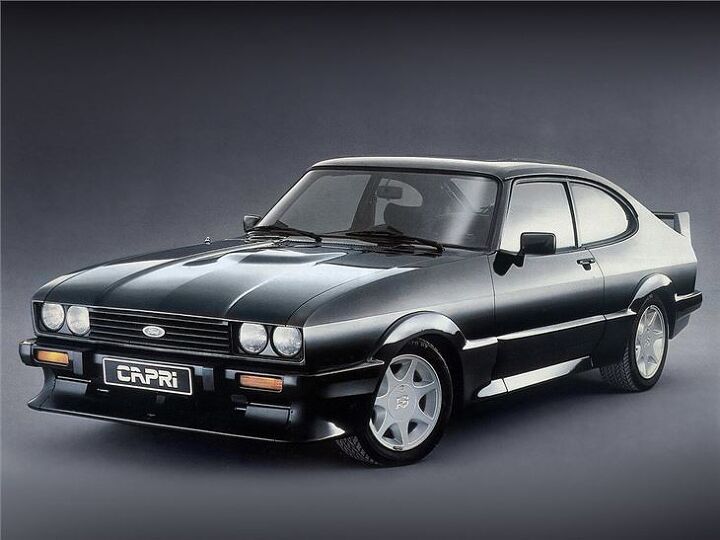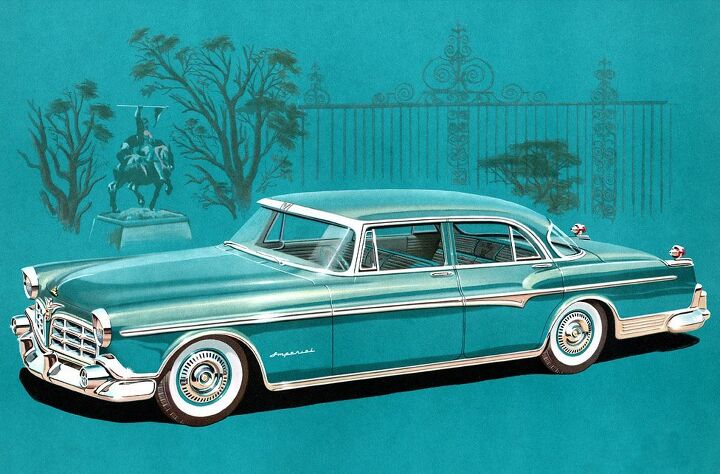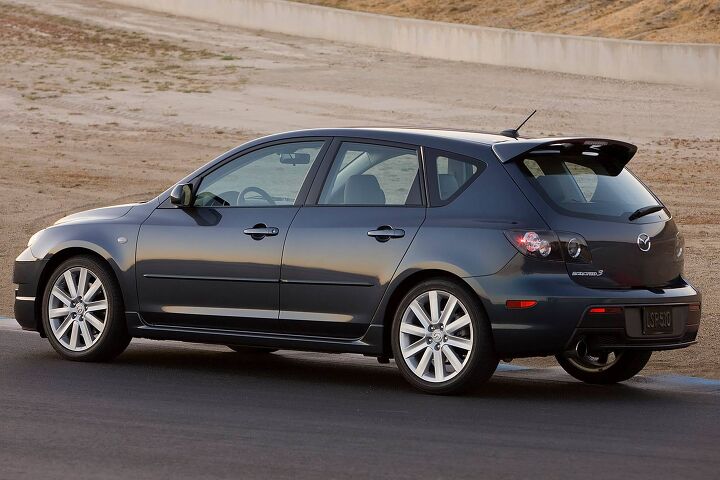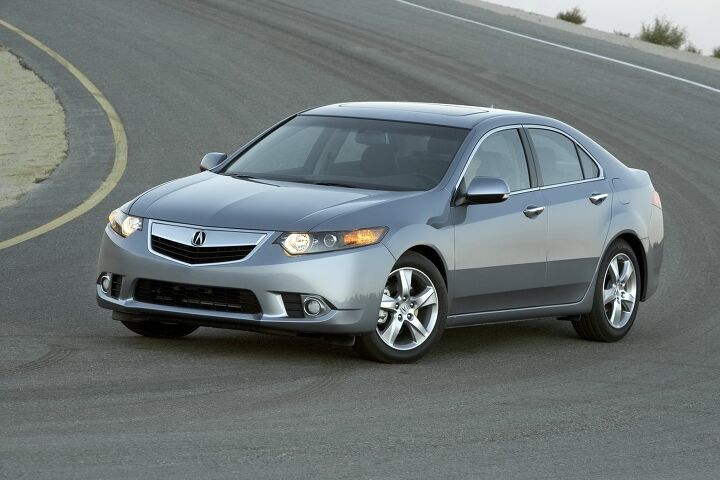#Editorials
Driving Dystopia: Stellantis Is Becoming a Software Company Like Everyone Else
On Tuesday, Stellantis announced a plan to cultivate €20 billion ($23 billion USD) per year by 2030 via “software-enabled product offerings and subscriptions.” However, the automaker will first need to increase the number of connected vehicles it has sold from 12 million (today) to 34 million by the specified date.
This is something we’ve seen most major manufacturers explore, with some brands firmly committing themselves to monetizing vehicular connectivity through over-the-air (OTA) updates, data mining, and subscription services. Though much of this looks decidedly unappetizing, often representing a clever way for companies to repeatedly charge customers for equipment that’s already been installed.
Quantum Leaps: Geely Saves Saab Instead of Volvo
Rare Rides Icons: The History of Imperial, More Than Just a Car (Part VIII)
We continue our Rare Rides Icons series on Imperial today. Starting in 1957, Chrysler’s then-separate luxury arm spent more and more time on bold styling, and less on the hand-built quality for which the company’s first cars in 1955 and 1956 were known.
Opinion: Vehicles That Deserve A Heritage Parts Program
You finally did it, didn’t you? You beautiful disaster, you did it! You spent nearly $30,000 US American dollars on thirty-seven-year-old Toyota Corolla because of a comic book, and you aren’t even mad about it. Hell, you paid a little extra for the “authentic” Fujiwara Tofu Shop decals on the doors. You. Kick. Rear. And now, after you didn’t think it could be possible to feel better about your automotive purchase, I’m going to make you feel better about your automotive purchase – because you can now buy factory-fresh parts for your Corolla AE86, straight from Toyota.
That’s right kids, through its captive motorsport brand, Gazoo Racing, Toyota is reproducing spare parts for the Corolla Levin Sprinter Trueno “AE86” as part of the GR Heritage Parts Project. The project reproduces new original parts that have been discontinued and sells them as genuine parts with a standard new part warranty, “ in order to support customers who wish to continue driving older vehicles that are full of memories and that they truly love.”
All kidding aside, you have to admit that the concept of a Heritage Parts program is great, even if the Initial D AE86 isn’t exactly your cuppa – but it sort of begs the question, what other new-age classics might be worthy of a heritage program? I’m glad you asked!
Opinion: 'Nissan Ambition 2030' Was an Hour of Wishful Thinking
Nissan Motor Co. has confirmed plans to invest 2 trillion yen ($17.65 billion USD) over the next five years to accelerate its electric vehicle development program. Like most major manufacturers, the automaker wants to launch a bevy of electrified products over the next decade and derive a relevant portion of its income from EVs.
As explained by CEO Makoto Uchida on Monday as part of the “Nissan Ambition 2030,” the plan is to launch 23 new vehicles with some amount of electrification while it attempts to implement solid-state batteries into three concept vehicles that supposedly foreshadow future lineups. These include the battery-electric “Surf-Out” lifestyle pickup, “Max-Out” sports convertible, “Chill-Out” regular car, and “Hang-Out” adventure crossover. Though all three appear to be little more than drafts of vehicles Nissan would eventually like to build, boasting technologies that we’re not sure are feasible. For example, the Hang-Out is featured with a polygonal purple awning that oozes impossibly out of the vehicle’s roof. It lacks realism, which ended up being a central theme of the Nissan Ambition 2030 presentation that was broadcast on Monday.
Rare Rides Icons: The Ford Capri, a European Mustang (Part III)
Today we conclude the Ford Capri’s story with its third and final generation. After the Mark I’s promising start as a simple and affordable sporty coupe, the Mark II went a bit too soft and comfortable and diverged into many different trims as Ford tried to appeal to a wider audience.
“We can fix it!” exclaimed Ford. Time for Capri Mark III.
Buy/Drive/Burn: Compact Five-door Hatchbacks From 2007
Our Buy/Drive/Burn today is yet another reader suggested trio, this time from SoCalMikester. Mike wants to take a look a three quite affordable compact hatchbacks from 2007. Honda, Nissan, and Scion are all on offer today, but which one’s worth your limited number of 2007 dollars?
Rare Rides Icons: The History of Imperial, More Than Just a Car (Part VII)
Today’s installment of the Imperial series is our seventh and coincides with the seventh generation Imperial. Officially it was the second-generation car under the new Imperial marque, an independent arm of Chrysler launched in 1955 to compete with the likes of Lincoln and Cadillac. The move to independence brought with it a resurgence of interest in the brand, as the Exner styled ’55 and ’56 Imperials stood out from the rest of Chrysler’s offerings visually, and in terms of quality and luxury. We pick up in 1957 when it was time for another new Imperial.
Rare Rides Icons: The Ford Capri, a European Mustang (Part II)
We continue our series on the sporty European market Ford Capri today. Introduced in 1969 as a pony car to suit customers outside of North America, Capri proved an immediate success across Europe and found a more limited customer base in North America too. By the mid-Seventies, times had changed and it was time for a new Capri, the Mark II.
Rare Rides Icons: The History of Imperial, More Than Just a Car (Part VI)
Our Rare Rides Icons series on the Chrysler Imperial picks up today at perhaps the most pivotal time in Imperial’s history. As the model’s fifth generation concluded in 1954, Chrysler was also concluding development of its big secret plans for Imperial: A new luxury brand of exclusivity and prestige.
Buy/Drive/Burn: Hot Japanese Sport Compacts From 2009
On a recent Buy/Drive/Burn that featured some alternative Japanese compacts from 2008, frequent commenter theflyersfan suggested a second look at the same three cars, but in hotter variants. Today’s the day, and it’s 2009.
Rare Rides Icons: The Ford Capri, a European Mustang (Part I)
Across two generations and nearly two decades of production, the Ford Capri existed as the European market alternative to the very America-centric Mustang. Basic or more luxurious, thrifty or more powerful, Capri played an important role in its day: It brought a practical, fun driving experience within reach of the average European family consumer.
Opinion: 5 Ways Rural Drivers Benefit From EVs
Despite being presented as the ideal vehicle for “urbanites and city dwellers who don’t drive long distances,” it’s actually rural drivers who stand to benefit the most from making the switch to an electric vehicle (EV). And that’s often true regardless of what state they live in or what type of vehicle they currently drive. And, while it’s true that rural communities across the country have their own cultures and characteristics, common themes like longer driving distances, larger vehicles, and a number of shared socio-economic factors all contribute to a potential benefit from vehicle electrification.
So, without further ado, here are five reasons why rural drivers stand to benefit the most from switching to an electric car.
Rare Rides Icons: The History of Imperial, More Than Just a Car (Part V)
Our history of the Imperial series continues today, as Part V coincides with the dawn of the Fifties. Imperial wasn’t in the best place after its long-lived fourth-generation model was parted by the cruel reality of World War II.
But Chrysler was determined to launch the Imperial of the Fifties in a big way, with more body style availability, the return of two wheelbases, and new technology.
Buy/Drive/Burn: Near Premium Midsize Sedans From 2011
Today’s Buy/Drive/Burn trio are near-premium sedans from the midsize segment. This set was a suggestion from commenter CoastieLenn on our B/D/B entry from last week. The year is 2011 – does Acura, Audi, or Volvo get the Buy nod?






























Recent Comments